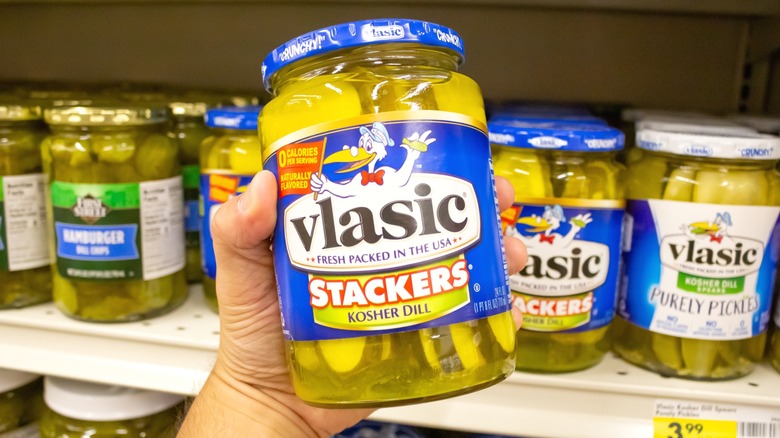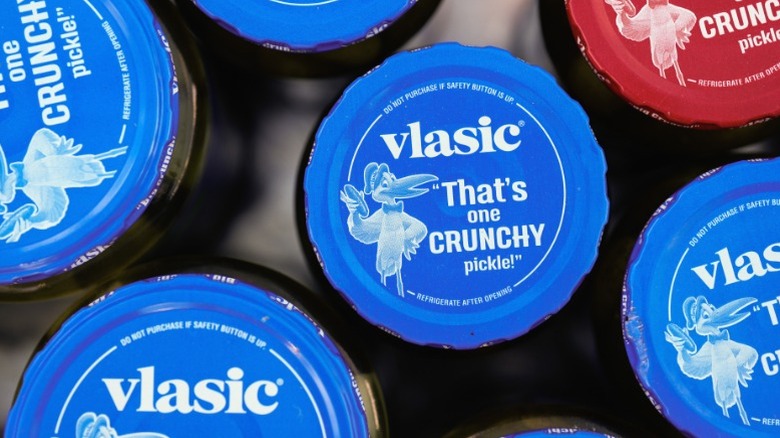Wait, What Do Storks Have To Do With Pickles?
Some food mascots make intuitive sense. StarKist sells tuna (although it's our least-favorite brand), so it has a friendly-looking tuna fish named Charlie as its mascot. Others are a bit more of a stretch, but still plausible: nobody would typically associate birds with chocolate cereal, but how else can General Mills tell you that you'll go "cuckoo for Cocoa Puffs"? But then there's Vlasic, which sells pickles with the help of a...stork? A kindly-looking stork with glasses and a red bowtie? Far be it from us to complain — the stork is a noble creature, a tall, gangly bird that makes its home in increasingly endangered wetlands. But what business does a stork have selling pickles? Long story short: because storks and pickles are both associated with pregnancy.
You've probably heard about the connection between pregnancy and pickle cravings, although there isn't a straightforward explanation as to why. You've probably also seen big cardboard cutouts of storks outside houses which recently welcomed a newborn baby, and that does have a straightforward explanation: storks have long been seen as a symbol of parenthood and fertility, as many species prefer to mate with a single partner and are generally viewed as doting parents to their young. In fact, the concept of newborn babies being delivered by a stork is a common tale told to those who might be a little too young to learn the truth about reproduction.
Vlasic adopted the stork mascot in 1974
Which came first, the pickle or the stork? The pickle, of course — although the cheese wheel came before either of them. Vlasic, the pickle company with the aforementioned friendly stork mascot, started life in 1912 as a creamery in Michigan, founded by a Bosnian Croat named Frank Vlašić. For a while, the company sold nothing but dairy products, and enjoyed a great deal of success; in fact, they became the biggest creamery in Michigan. But they weren't satisfied with that, and in 1937 Frank and his son Joe branched out and started making pickles. In doing so, they reshaped the country's eating habits. In 1933, Americans ate about two pounds of pickles a year per capita; in 1974, they ate 8 pounds per year.
That was where the stork came in. By the mid-'70s, the baby boom had ended, which became a source of some anxiety for the American public — to say nothing of advertisers. (This is also how we got Gerber Singles.) Some executive made the pickle-stork connection, and the result was the Vlasic Stork. With his bowtie, glasses, and a pickle recalling a jaunty cigar, he was designed to evoke Groucho Marx, which was reflected in his voice. (This was back when Marx was still alive and known as a beloved comedian rather than a funny-looking nose and glasses.) Fifty years later, that stork still graces each jar of Vlasic pickles — including the one in your fridge which you should really get around to eating.

